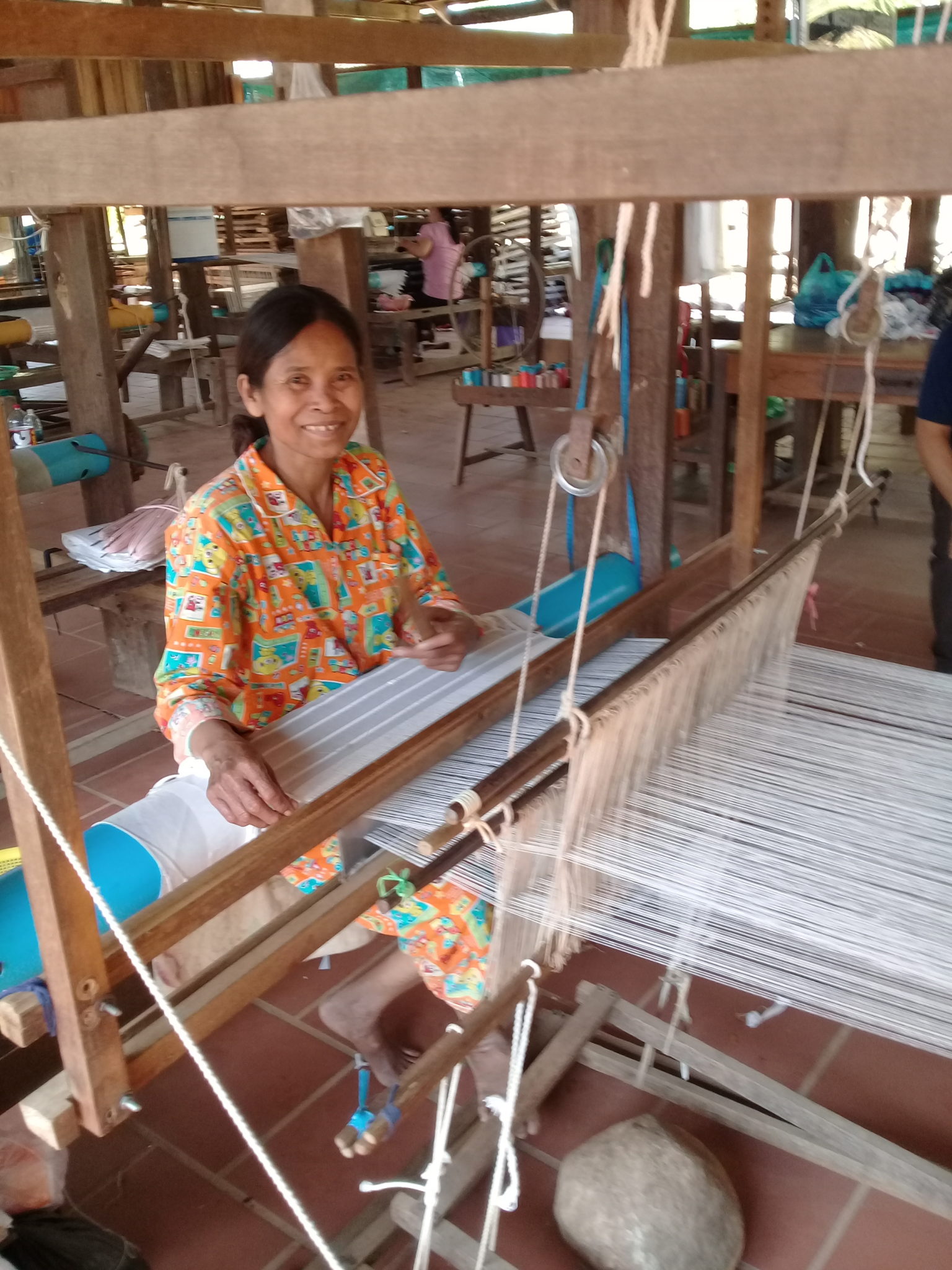Nogah Seidemann, a senior in the Department of Design and Merchandising and recipient of the prestigious Udall Scholarship, not only cares deeply about the design and production of clothing, but about doing so in an eco-friendly, sustainable manner.

Currently in Cambodia interning with tonlé, one of the companies at the forefront of global sustainable fashion, Seidemann is excited to follow her passions and learn the ropes from a company she has long admired.
“I have been keeping up with sustainable fashion for a few years now, and tonlé has always stood out to me as a leader within the field,” she said. “After following the company for a few years, I was beyond excited when I found out I would truly get to intern there!”
Problems with fast fashion
As the pace of society has sped up and demand for immediate goods has increased, the fashion industry has had to keep up, thus sparking the movement towards fast fashion and power-hungry design labels. With this new emphasis on quantity over quality and cheap, quickly produced products, the amount of waste generated has increased dramatically.
 Textile waste occurs at nearly every stage of the production process, from excess orders of material, to scraps during cutting, damaged textiles, and pieces that fail inspection. Factor in the water and energy used to make those raw materials and the environmental footprint becomes even larger.
Textile waste occurs at nearly every stage of the production process, from excess orders of material, to scraps during cutting, damaged textiles, and pieces that fail inspection. Factor in the water and energy used to make those raw materials and the environmental footprint becomes even larger.
“While the reduction of waste is crucial all around the world, it is particularly important in developing countries like Cambodia where the waste management infrastructure is significantly lacking. This means that much of the waste is just dumped or burned which, particularly with synthetics, causes serious air pollution problems,” explained Seidemann.
Tonlé ensures that its production is as sustainable as possible by buying up deadstock fabric and utilizing all of its scraps to make new woven pieces. They have also developed their own formula for recyclable paper made from scraps of fabric and natural glue. Even the zippers, buttons and packaging are all sourced in a sustainable way or are recyclable, making tonlé’s design label one of the only true zero waste collections on the market today. Their efforts have eliminated around 10,000 pounds of waste from the landfill.
“I feel incredibly lucky help support this impressive achievement,” said Seidemann.
Behind the scenes of sustainable fashion
Tonlé is based in Phnom Penh, Cambodia, a very lively city certain to instill a bit of culture shock into any foreign newcomer.

“Slowly, but surely, I am mastering the colorful and hectic streets from the seat of my bicycle (another useful CSU skill),” Seidemann said.
Their operation is run out of a small converted house. The workers are primarily female, and Seidemann describes the atmosphere as happy and comfortable with a constant din of cheerful chatter.
“They also have lunch cooked and everybody has their lunch break together at the same time which is really nice and so different from the work culture in the U.S.,” she said.
 The entire production process happens onsite, including sample making, cutting, sewing, printing and dyeing, which is very unique within the fashion industry.
The entire production process happens onsite, including sample making, cutting, sewing, printing and dyeing, which is very unique within the fashion industry.
“This allows for completely direct communication between the different components and its neat getting to see a product go from start to finish all in one place,” said Seidemann.
“Working for a small company as an intern means that you get to do a little bit of everything!” she said. “I predominantly work with the technical designer doing activities such as helping develop patterns, doing fit testing, and developing ‘tech packs’ which are essentially a blueprint/construction guide for a garment).”
Along with all this, Seidemann has helped with a variety of photoshoots, natural dyeing textiles and working on the wholesale and retail sites. “Every day has been something entirely different, and I am constantly learning new skills and practicing the ones I learned at CSU.”

Diminishing the disconnect
Due to its global nature, fashion designers and producers often remain disconnected from the people who are making their garments and get caught up in the fast-paced world of capitalist consumerism.
“To me, this disconnect is a big part of why labor issues and other mistreatments occur, so it is important for me to truly get to see where stuff was being made and even more so how it can be done in an ethical and positive way,” said Seidemann. “I think interning at tonlé will keep me more grounded in the realities of the production process and show me the possibilities of what happens when we treat people well.”
Seidemann will be taking over the @produtobeacsuram Instagram account from Mar. 11-17.
The Department of Design and Merchandising is a part of CSU’s College of Health and Human Sciences.